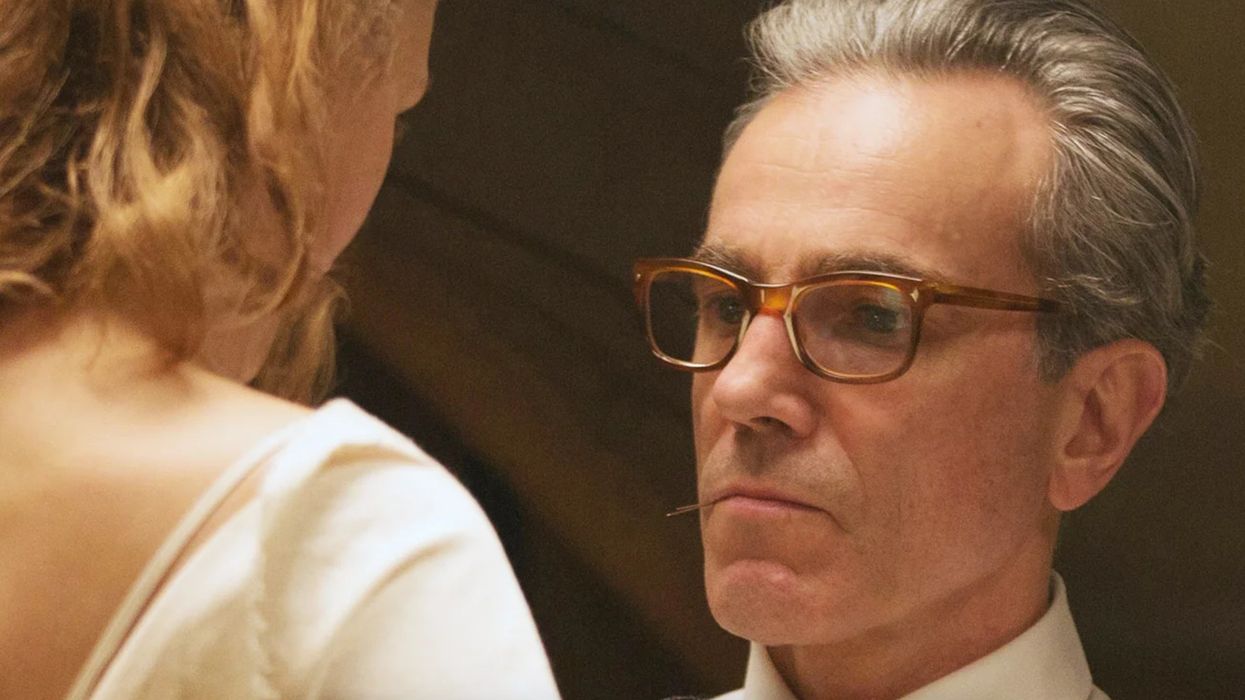What's It like to Light for PTA? The 'Phantom Thread' Crew Is Here to Tell You
Key members of the Phantom Thread crew took audiences on an incredible journey through the process of lighting the film.

Paul Thomas Anderson's 2017 film follows the height of British 1950's couture fashion. It is a visually rich story with lavish settings, beautiful clothing, and of course a brooding Daniel Day-Lewis. It required a specific visual language and complex lighting set-ups. In fact, one of the visual inspirations for this film was Kubrick's Barry Lyndon.
Many different aspects of the film's approach to lighting were discussed by crew members, including the first assistant camera Erik L. Brown, gaffer Jonny Franklin, and lighting cameraman Michael Bauman, during a recent livestream hosted by Lux Lighting.
If you'd like, you can jump right into the video. It's a treasure trove of information! We'll look at a few interesting takeaways from the stream after the jump.
Start testing early
PTA wanted his images in this film to have a lot of texture and vintage feel, so Bauman says they started testing different lenses and lighting set-ups early, even while working on other projects, like music videos. Brown says this is a process that never ends, and it was important on a project that shot on Kodak 35mm film.
They checked tonal ranges for the film stock, how lights like chandeliers and lamps flared on the film, and how different fabrics and paint colors appear when shot.
Some of these preliminary test shots are shown during the livestream, and they provide a fascinating look behind the scenes. You also get a glimpse of all the lenses they used on the project.
The team reveals that they shot very little of the film on a zoom. In some locations, they used a Libra head stabilized camera mount on a dolly that they rolled across sets, but had to cope with period hardwood floors.

Be flexible and open to happy accidents
The team is open about how difficult and maddening some of their shooting locations were. During one early scene in the restaurant, they kept dealing with natural light in a window having "three to five-stop exposure changes," Brown says.
They ended up with a gorgeous shot of light hazing around Day-Lewis' head, but it was mostly an accident. The crew tried hard to make sure the exposure matched over the course of a long afternoon so that the film's editor could piece together a seamless scene. It slowed them down significantly, they said.
They had the same issues in the Woodcock house breakfast nook, Bauman says, where there were really large windows with exterior light coming in.
They used Luminair on an iPad as their mobile lighting control console.

Get creative to please your director
Throughout the stream, the team talks about having to adapt their styles to fit what PTA wanted for the look of the film. They did a lot with low and natural light. At some points, practical lighting that PTA wanted in the shots (like chandeliers or wall sconces or fireplaces) had to be augmented in creative ways.
One example is the wall sconces. The crew added LED strips to the bulbs and dimmers to not only give the crew control the brightness of the lights but to also afford them an extra 20 to 30 minutes of shooting at the end of the day.
Brown called these invented bulbs "works of art." Franklin points out they weren't able to rewire the house, so this was an alternative solution for getting extra light into spaces.

For instance, in one of Woodcock's studio rooms where he has an important garment on a dress form, the crew had tall windows, sconces, and a fairly low chandelier as practicals. Actors needed to be able to move freely in the space. So the crew augmented those lights with some rigged lights in the ceiling.
"Thank God the ceilings in that place were high," Bauman says of the room.
For diffusion, they sometimes used smoke. This made sense for both the location and the time period. Visitors to the fashion house would have been smoking, right?

Be sure to go through the entire stream to learn even more about what it's like to work with PTA and Day-Lewis, and other ways the crew created new solutions for beautiful lighting set-ups.
What's next? Enjoy more PTA
Do you know the director's nine cinematic trademarks? What about the four basic elements of his directing style? And here are forty-four movies PTA recommends, so get started on that!
Source: Lux Lighting











